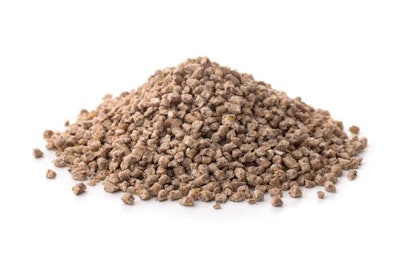
Japanese animal feed producer Feed One will increase production at its plant in Vietnam by 50 percent and produce pelleted feed for swine and chickens.
According to a report, the company will add one production line to the two lines it has at its plant outside of Ho Chi Minh City, increasing capacity to 200,000 tons per year.
Feed One says its feed pellets are less prone to disintegration into powder, therefore making the feed easier for animals to eat. The company says this can decrease the amount of time it takes to raise animals to market weight.
In recent years, one of Feed One’s companies, Kyodo Siryo, and Sojitz formed Kyodo Sojitz Feed in Vietnam and began producing compound feed in the country.
The company is looking to capitalize on Vietnam’s growing compound feed industry, and plans to expand in other parts of Asia as well. According to Alltech’s 2017 Global Feed Survey, Vietnam is the fastest-growing Asian feed producer, hitting 18.7 million metric tons — marking 21 percent growth over 2015 volumes. This push was driven primarily by increased pig and broiler feed production.
“Vietnam is the most dynamic region in terms of growth and opportunity. It’s not a big country, but a country that packs a big punch,” said Matthew Smith, vice president of Asia-Pacific at Alltech, who spoke at One, The Alltech Ideas Conference in Lexington, Kentucky, in May.
Consumption of protein by Vietnamese people is growing quickly, with milk the “standout protein,” Smith said. And, with protein consumption growing quickly, so too is the animal feed industry.
“There is a huge increase in protein consumption, driven by the fact that we see a big movement in wellness,” with the growing middle class using their wealth to improve their well-being, Smith said.

















